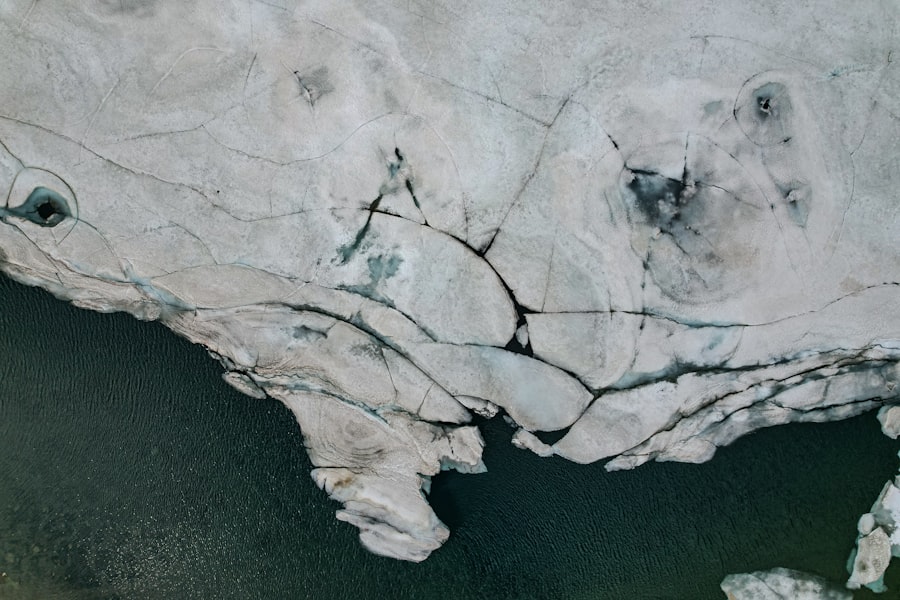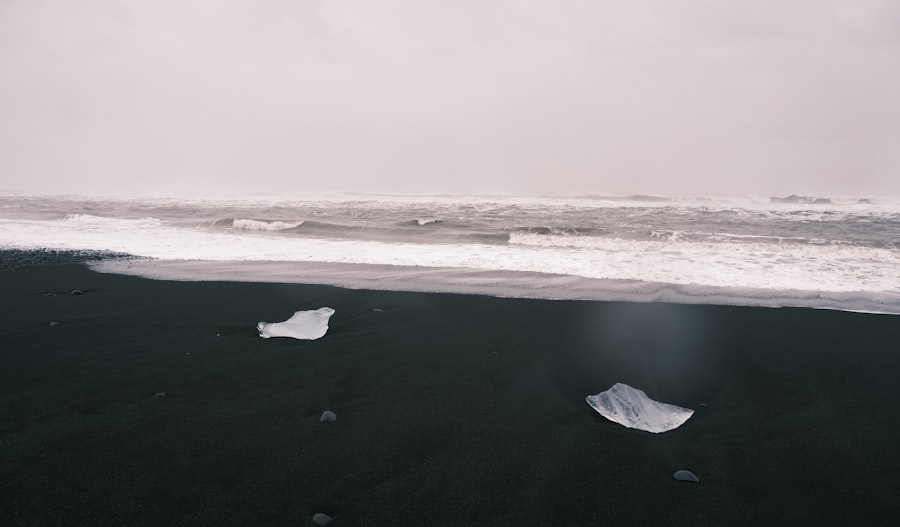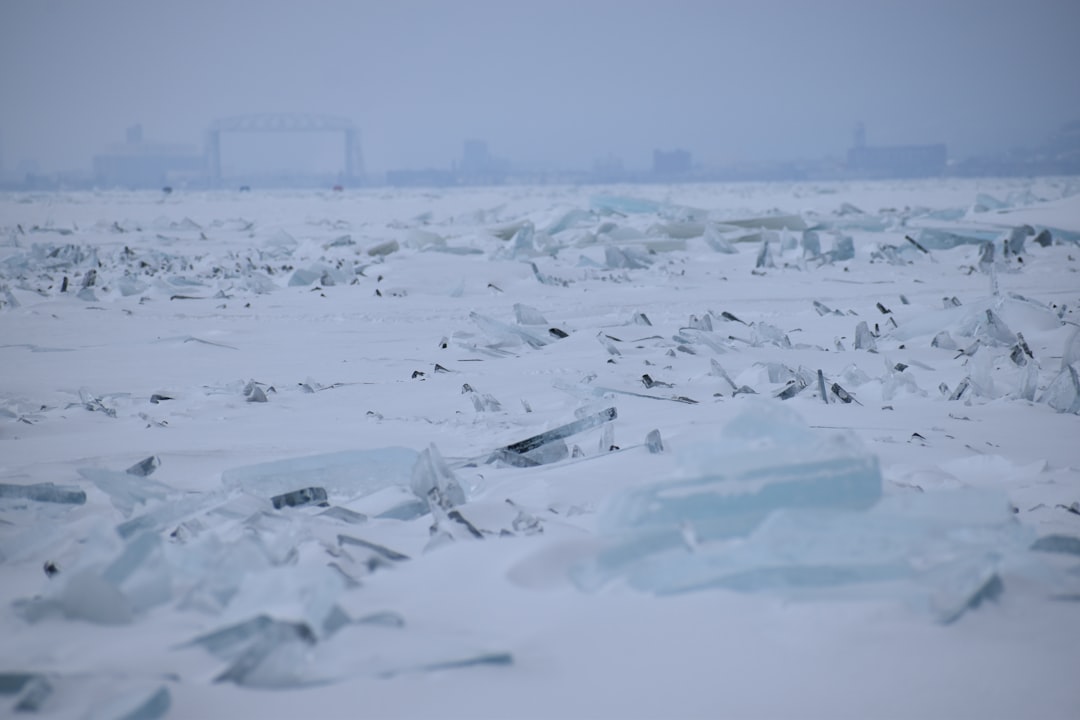As you delve into the complexities of Arctic pollution, you may find yourself confronted with a stark reality: the pristine beauty of this remote region is under siege. The Arctic, often viewed as a symbol of untouched wilderness, is increasingly becoming a repository for various pollutants. From industrial waste to the remnants of military activities, the Arctic is facing an environmental crisis that threatens its delicate ecosystems and the communities that depend on them.
Understanding the sources and implications of this pollution is crucial for anyone who cares about the future of our planet. The Arctic’s unique geography and climate make it particularly vulnerable to pollution. The cold temperatures can trap contaminants, allowing them to persist in the environment for extended periods.
As you explore this topic, you will uncover how historical events, such as the Cold War, have left a lasting legacy of pollution that continues to affect the region today. The interplay between human activity and natural processes in the Arctic creates a complex web of challenges that require urgent attention and action.
Key Takeaways
- The Arctic is facing significant pollution challenges, including nuclear waste, oil and gas exploration, and persistent organic pollutants.
- The Cold War had a major impact on the Arctic, leading to nuclear waste and contamination that continues to pose a threat to the region.
- Oil and gas exploration in the Arctic has the potential to further exacerbate pollution and environmental degradation in the region.
- Persistent organic pollutants, such as pesticides and industrial chemicals, are a major concern in the Arctic due to their ability to bioaccumulate in the food chain.
- Arctic pollution has a significant impact on indigenous communities, affecting their health, traditional ways of life, and food sources.
The Cold War’s Impact on the Arctic
The Cold War era marked a significant turning point for the Arctic, as military tensions between superpowers led to extensive industrial and military activities in the region. You might be surprised to learn that the Arctic became a strategic battleground, with both the United States and the Soviet Union establishing bases and conducting tests that would leave a lasting impact on the environment. The race for dominance not only militarized the region but also introduced a host of pollutants that would linger long after the conflict ended.
As you examine this period, consider how military operations contributed to environmental degradation. The construction of bases, testing of weapons, and disposal of hazardous materials created a toxic legacy that still haunts the Arctic today. The remnants of these activities can be found in soil, water, and even in the air, posing risks to both wildlife and human health.
The Cold War’s influence on Arctic pollution is a stark reminder of how geopolitical conflicts can have far-reaching environmental consequences.
Nuclear Waste and Contamination in the Arctic

One of the most alarming aspects of Arctic pollution is the presence of nuclear waste. During the Cold War, both superpowers conducted nuclear tests and disposed of radioactive materials in Arctic waters. As you explore this issue, you may find it unsettling to learn about the extent of contamination that has occurred.
Abandoned military sites and sunken submarines are just a few examples of how nuclear waste has been carelessly left behind, posing significant risks to marine life and ecosystems. The implications of nuclear contamination are profound. Radioactive materials can bioaccumulate in marine organisms, leading to potential health risks for those who consume them.
As you consider the long-term effects of this pollution, it becomes clear that addressing nuclear waste in the Arctic is not just an environmental issue; it is also a matter of public health and safety. The challenge lies in finding effective ways to manage and remediate these hazardous sites while ensuring that future generations are not burdened by the mistakes of the past.
Oil and Gas Exploration in the Arctic
| Metrics | 2018 | 2019 | 2020 |
|---|---|---|---|
| Exploration Wells Drilled | 25 | 20 | 15 |
| Barrels of Oil Discovered | 500,000 | 400,000 | 300,000 |
| Natural Gas Reserves (trillion cubic feet) | 2.5 | 2.0 | 1.5 |
The allure of untapped oil and gas reserves has drawn significant interest from energy companies seeking to exploit the Arctic’s natural resources. As you investigate this aspect of Arctic pollution, you will discover that drilling and extraction processes can lead to severe environmental degradation. Oil spills, habitat destruction, and increased greenhouse gas emissions are just a few of the consequences associated with these activities.
You may also want to consider how oil and gas exploration exacerbates existing pollution issues in the Arctic. The infrastructure required for extraction—such as roads, pipelines, and drilling platforms—can disrupt fragile ecosystems and contribute to soil and water contamination. Furthermore, as climate change continues to open up previously inaccessible areas, the pressure to exploit these resources intensifies, raising ethical questions about sustainability and environmental stewardship.
Persistent Organic Pollutants in the Arctic
Persistent organic pollutants (POPs) are another significant concern when discussing Arctic pollution. These toxic chemicals, which include pesticides and industrial chemicals, can travel long distances through air and water currents before settling in remote regions like the Arctic. As you explore this topic, you may be struck by how these pollutants accumulate in the food chain, posing risks not only to wildlife but also to human populations.
The presence of POPs in the Arctic is particularly troubling because they can have severe health effects on both animals and humans. As you consider their impact on indigenous communities who rely on traditional hunting and fishing practices, it becomes evident that addressing POPs is essential for protecting cultural heritage and public health. The challenge lies in reducing emissions at their source while also cleaning up existing contamination in this fragile environment.
Impact of Arctic Pollution on Indigenous Communities

Indigenous communities in the Arctic are among those most affected by pollution in their environment. As you delve into their experiences, you will find that many rely on traditional subsistence practices for their livelihoods. However, pollution threatens their food sources, cultural practices, and overall well-being.
Contaminants like heavy metals and POPs can accumulate in fish and marine mammals, leading to health issues for those who consume them. Moreover, as you explore this topic further, consider how pollution impacts not just physical health but also cultural identity. For many indigenous peoples, their connection to the land and sea is integral to their way of life.
Pollution disrupts this relationship, leading to feelings of loss and disconnection from their heritage. Addressing these issues requires not only environmental remediation but also respect for indigenous rights and knowledge systems.
International Efforts to Address Arctic Pollution
In response to growing concerns about Arctic pollution, various international efforts have emerged aimed at addressing these pressing issues. You may find it encouraging to learn about treaties and agreements designed to protect the Arctic environment and promote sustainable development. Organizations such as the Arctic Council play a crucial role in fostering cooperation among Arctic nations to tackle pollution collaboratively.
As you examine these international efforts, consider how they reflect a growing recognition of the need for collective action. Countries are beginning to understand that pollution knows no borders; therefore, addressing it requires collaboration across nations. However, challenges remain in terms of enforcement and accountability.
You may ponder whether current frameworks are sufficient or if more robust measures are needed to ensure meaningful progress in combating Arctic pollution.
Future Challenges and Solutions for Arctic Pollution
Looking ahead, you may wonder what challenges lie ahead for addressing Arctic pollution. Climate change is expected to exacerbate existing issues by altering ecosystems and increasing human activity in the region. As ice melts and new shipping routes open up, there is a heightened risk of oil spills and other forms of contamination.
However, there are also potential solutions on the horizon. Innovations in clean technology, stricter regulations on industrial practices, and increased public awareness can all contribute to reducing pollution in the Arctic.
As you explore these possibilities, consider how individual actions can also play a role in advocating for change—whether through supporting sustainable practices or engaging with policymakers to prioritize environmental protection.
The Role of Climate Change in Arctic Pollution
Climate change is intricately linked to the issue of Arctic pollution. As temperatures rise and ice melts, pollutants that have been trapped in permafrost are released into the environment. This phenomenon creates a feedback loop where increased pollution further accelerates climate change impacts.
You may find it alarming that as climate change progresses, it not only threatens wildlife but also exacerbates existing pollution problems. As you reflect on this relationship between climate change and pollution, consider how urgent action is needed to address both issues simultaneously. Mitigating climate change through reduced greenhouse gas emissions can help protect vulnerable ecosystems while also curbing pollution levels.
This interconnectedness highlights the importance of adopting holistic approaches that consider environmental health as a whole rather than treating each issue in isolation.
Collaborative Research and Monitoring of Arctic Pollution
To effectively combat Arctic pollution, collaborative research and monitoring efforts are essential. You may be intrigued by how scientists from various disciplines come together to study pollutants’ effects on ecosystems and communities. By sharing data and resources across borders, researchers can gain a more comprehensive understanding of pollution dynamics in this complex environment.
As you explore these collaborative initiatives further, consider how they empower local communities by involving them in research efforts. Indigenous knowledge can provide valuable insights into environmental changes that may not be captured through traditional scientific methods alone. By fostering partnerships between scientists and indigenous peoples, we can develop more effective strategies for monitoring and addressing pollution while respecting cultural perspectives.
Addressing the Legacy of Cold War Pollution in the Arctic
In conclusion, addressing the legacy of Cold War pollution in the Arctic requires a multifaceted approach that considers historical context while looking toward future solutions. As you reflect on this issue, it becomes clear that collaboration among nations, communities, and researchers is vital for creating meaningful change. The challenges posed by pollution are significant but not insurmountable; with concerted effort and commitment, we can work toward restoring the health of this fragile region.
You may feel inspired by the potential for positive change as awareness grows about Arctic pollution’s impacts on ecosystems and communities alike. By advocating for sustainable practices and supporting international cooperation efforts, you can contribute to a brighter future for the Arctic—a future where its natural beauty is preserved for generations to come.
The legacy of Arctic pollution from the Cold War era continues to be a pressing environmental issue, as remnants of military activities and nuclear testing have left a lasting impact on the region’s delicate ecosystem. An insightful article that delves into the historical context and ongoing challenges of this issue can be found on Hey Did You Know This. The article explores how geopolitical tensions during the Cold War led to significant environmental degradation in the Arctic, and it discusses current efforts to mitigate these effects. For more detailed information, you can read the full article by visiting this link.
WATCH THIS! Greenland’s Ice Is Hiding A Nuclear Time Bomb
FAQs
What is Arctic pollution?
Arctic pollution refers to the contamination of the Arctic environment, including its air, water, and land, by various pollutants such as industrial chemicals, heavy metals, and other harmful substances. This pollution can have detrimental effects on the delicate Arctic ecosystem and the health of the indigenous people and wildlife that rely on it.
What is the Cold War?
The Cold War was a period of geopolitical tension and competition between the United States and its allies on one side, and the Soviet Union and its allies on the other, from the end of World War II in 1945 until the early 1990s. It was characterized by political and military rivalry, as well as ideological conflict, but without direct armed conflict between the two superpowers.
How is Arctic pollution related to the Cold War?
During the Cold War, both the United States and the Soviet Union conducted extensive military activities in the Arctic region, including the testing of nuclear weapons, the operation of military bases, and the disposal of hazardous waste. These activities resulted in significant pollution of the Arctic environment, which continues to have long-term impacts on the region today.
What are the environmental impacts of Arctic pollution from the Cold War?
The environmental impacts of Arctic pollution from the Cold War include contamination of soil, water, and wildlife with hazardous substances such as radioactive materials, heavy metals, and persistent organic pollutants. This pollution can disrupt ecosystems, harm wildlife, and pose risks to human health, particularly for indigenous communities that rely on traditional subsistence activities.
What efforts are being made to address Arctic pollution from the Cold War?
Efforts to address Arctic pollution from the Cold War include ongoing monitoring and research to assess the extent of contamination, as well as clean-up and remediation efforts to mitigate the impacts of pollution on the environment and human health. International cooperation and agreements, such as the Stockholm Convention on Persistent Organic Pollutants, also aim to reduce and eliminate sources of pollution in the Arctic.
